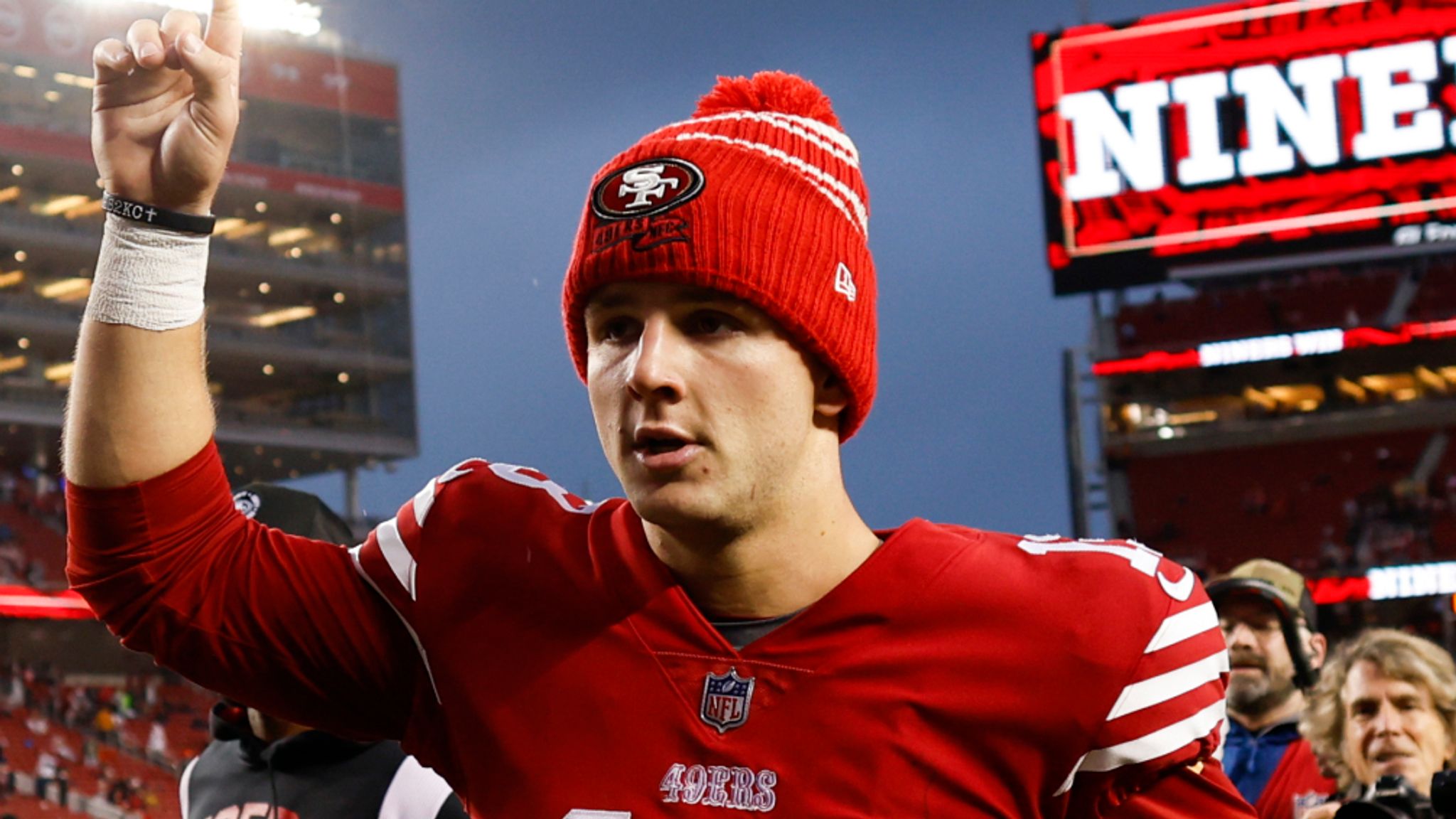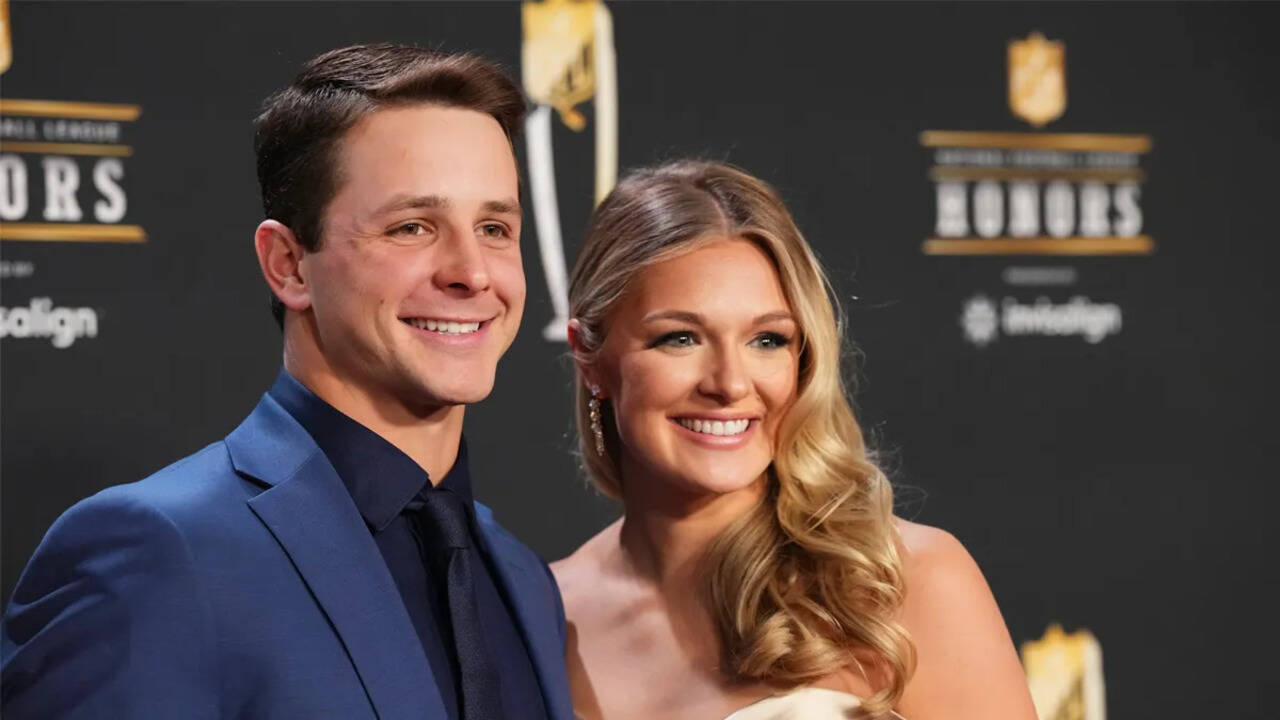According to sources familiar with the team’s medical evaluation, Purdy underwent imaging late Sunday and again Monday morning. The scans ruled out a major tear — a crucial sign — but revealed “soft-tissue stress consistent with repetitive load and acute hyperflexion,” a phrase one medical consultant described as “somewhere between turf toe and a severe bruise.”

“It’s the kind of thing that feels worse than it looks,” said a former team physician not involved in Purdy’s care. “You can tape it, numb it, pad it — but if he can’t drive off it, he can’t play his game.”
For Purdy, whose game depends as much on mechanics as instinct, that makes recovery more about feel than test results. Shanahan’s description — “not black and white” — wasn’t evasive. It was medical reality: the difference between pain tolerance and performance efficiency, a gray zone only the player’s body can define.
The Monday Review
Inside the 49ers’ headquarters in Santa Clara, the mood Monday morning was quiet but businesslike. Players trickled into the recovery room as staff replayed the Houston tape on repeat. Purdy appeared in walking shoes, not a boot, and spent most of the morning between treatment stations — cold therapy, soft-tissue work, mobility drills.
By 10 a.m., Shanahan and head athletic trainer Dustin Little met to review the evaluation. The consensus: no surgery, no IR, but no certainty on how quickly Purdy could return to full practice.
“He’ll be day-to-day,” Shanahan finally told reporters. “We’ll see how it responds. There’s a lot of gray to this one.”
The phrasing was deliberate. In previous years, Shanahan has erred on clarity, often announcing whether a player was “out” or “good to go.” This time, his caution reflected both Purdy’s importance and the subtle nature of the injury. Unlike a broken bone or torn ACL, a big-toe sprain can fluctuate dramatically — swollen one day, stable the next, then flaring again after a single misstep.
For a quarterback whose footwork is textbook precision, even a mild impairment can ripple across the offense.
The Technical Fallout

In the 49ers’ offense, Purdy’s lower-body mechanics are more than aesthetics — they’re foundational. The rhythm of Shanahan’s system relies on the quarterback’s footwork syncing with route timing: three-step, hitch, plant, release. A disrupted toe changes that entire metronome.
“Everything in Kyle’s scheme is built around trust in the timing,” said a former NFL offensive coordinator. “If Brock can’t push off that right toe with authority, the ball arrives half a beat late. That’s the difference between a 12-yard completion and a pick.”
Film analysts noticed subtle differences in Purdy’s movement late in the Houston game. On one rollout, he favored his left leg noticeably, shortening his stride and flicking the ball rather than driving through. On another, he missed Brandon Aiyuk on a shallow cross — the type of pass he’s hit a hundred times.
It wasn’t panic; it was physics.
Even Shanahan’s play-calling adjusted subconsciously. Fewer designed boots, fewer naked rollouts, more quick-set passes. The offense constricted like a muscle under tension.
When asked whether he had altered the game plan after Purdy’s injury, Shanahan smiled wryly. “We always adapt,” he said. “Sometimes it’s just about protecting the player until we know more.”
Medical Jargon Meets Team Strategy
Behind the scenes, the 49ers’ medical staff prepared what’s called a graduated return protocol — a day-by-day regimen balancing recovery and readiness.
-
Day 1–2: Reduce inflammation, compression, and mobility work.
-
Day 3–5: Introduce pool training and resistance bands.
-
Day 6–7: Light throwing, low-impact footwork, monitored load bearing.
-
Beyond: Gradual integration into team drills, pending pain threshold.
That plan would determine whether Purdy could be available for next week’s divisional matchup — a crucial one with postseason implications.
The challenge isn’t just physical healing but functional confidence. Players recovering from turf toe often describe a psychological hesitation — the subconscious fear of re-injuring the joint on push-off. That fraction of doubt can change everything from velocity to accuracy.
“It’s like driving with the parking brake half-on,” said one former quarterback who suffered a similar injury. “You can go, but not like you used to. And in this league, half a second is the difference between clean and crushed.”
Shanahan knows it too. That’s why his public tone was measured — not grim, not dismissive, just suspended in professional ambiguity.
Trusting the Process — and the Quarterback
Purdy has built his reputation on steadiness. From Mr. Irrelevant to one of the league’s most efficient passers, his rise has been defined by calm amid chaos. His teammates describe him as “unflappable,” a quarterback who “doesn’t flinch even when the pocket collapses.”
That mental resilience will be tested now.
In a private session after practice, Purdy reportedly insisted he could play through it. “I’ll be fine,” he told a teammate. “I’ve dealt with worse.” But Shanahan’s job isn’t to measure grit — it’s to preserve it. The coach has seen stars pushed too soon: Jimmy Garoppolo’s high-ankle sprain in 2020, George Kittle’s fractured foot later that same year. Both tried to return early. Both aggravated their injuries.
“Brock’s tough as hell,” Shanahan said. “But we have to be smart. We’ve learned that lesson.”
The unspoken message: trust science, not sentiment.
:max_bytes(150000):strip_icc()/brock-purdy-jenna-brandt-getty-recirc-1124-fa941d6ca590434488e78ce514ed9a14.jpg)
Inside the Locker Room
In the locker room Monday afternoon, players spoke cautiously but optimistically. Christian McCaffrey, who knows the anatomy of pain better than most, framed it simply: “He’s our guy. He’ll do everything right. We’ll hold it down till he’s good.”
Left tackle Trent Williams echoed that sentiment. “You don’t realize how much you rely on that one joint till you’re in a stance every play,” he said. “We’ll keep him clean when he’s back. But nobody’s rushing him.”
Quarterbacks coach Brian Griese spent extra hours reviewing film to identify where mechanical compensations appeared. “It’s all about sequencing,” he explained. “If his toe changes his weight transfer, we can tweak foot placement or adjust the drop depth. It’s like tuning an instrument — small changes make big differences.”





